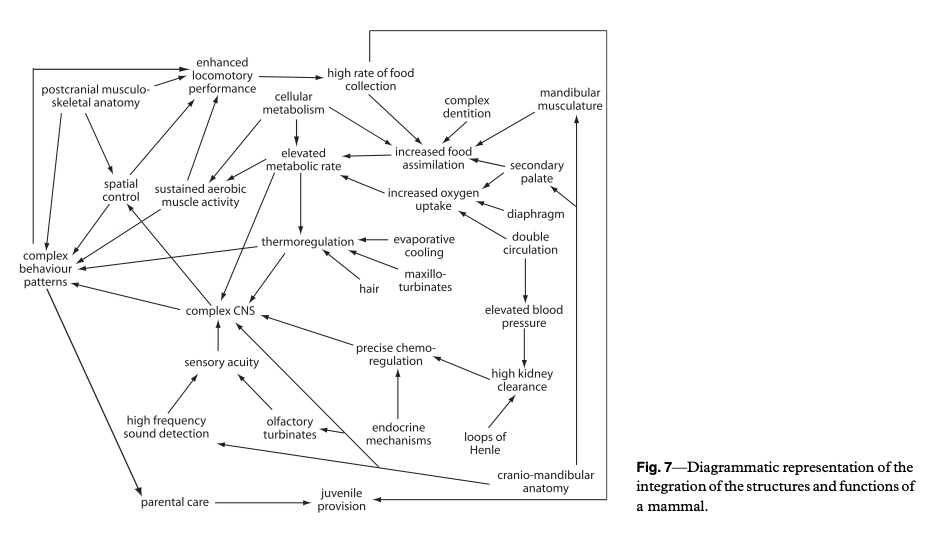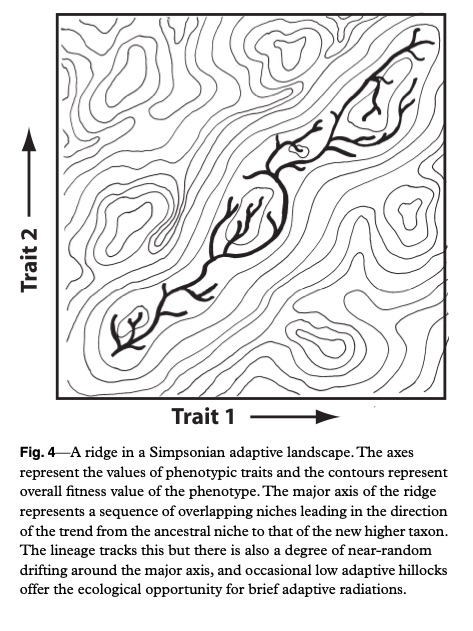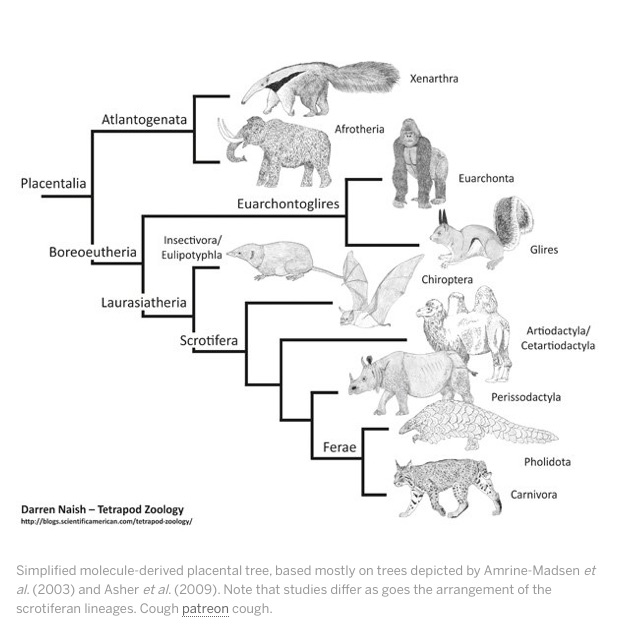35.9 – 34.0 million years ago
The Oligocene (starting today on Logarithmic History) sees a major diversification of anthropoid primates (monkeys, apes, and humans). Among the anthropoids, the major evolutionary split is a geographic one, between platyrrhines (New World monkeys) and catarrhines (Old World monkeys, apes, and humans). Aegyptopithecus is one of the earliest primates that clearly falls on the catarrhine side of that split (although the split must go back earlier).
At Logarithmic History we traffic in Big Questions, and one of the biggest questions of all is the balance of natural law and accident in making our world. Thus physicists have long hoped to find that the laws governing our universe reduce to just a few fundamental equations, but we saw at the beginning of this blog that they are now confronting the possibility that our universe is just one among many, and that the laws of physics in our universe may incorporate a large dose of historical accident. With the discovery of extra-solar planets, we’re just beginning to get an idea of how typical or atypical our solar system is. And we’ll have a lot of opportunities to ask whether there are Laws of History (an old idea now undergoing a revival in the new field of cliodynamics*) when we move into the historical period later in the year.
The field of biogeography – the study of the geographic distribution of species – has seen some major pendulum swings in this regard. Darwin was intensely interested in questions of biogeography mainly because they could provide support for the theory of evolution. His approach could fairly be called eclectic. From sometime in the second half of the twentieth century however, a lot of biologists thought they could do better than just answering particularistic questions about how species A got to island Z (sometimes disparaged as “stamp collecting”). They wanted to find scientific laws.
Edward O. Wilson was an early pioneer in this area. Along with Robert MacArthur, he developed a theory of island biogeography which was supposed to get the field out of its natural history phase, and turn it into a predictive science. According to MacArthur and Wilson, the number of species on an island is set by a predictable equilibrium between extinction (smaller islands have higher extinction rates) and colonization (remote islands have lower colonization rates). Being a good scientist Wilson actually put this theory to the test by getting an exterminator to “defaunate” (it means what you think it means) some little mangrove islets, and showing that they returned to very close to their predicted equilibrium numbers of animal species after a while.
For the biogeography of continents (and larger islands once part of continents) the quest for scientific laws took a different turn. The discovery of continental drift and plate tectonics encouraged a school of “vicariance biogeography.” Vicariance biogeographers liked to trace current biogeographic distributions to the wanderings of continents. They were highly allergic to explanations involving accidental long-distance dispersal over big stretches of ocean.
Alan de Queiroz, in The Monkey’s Voyage: How Improbable Journeys Shaped the History of Life, provides a highly readable overview of the decline (if not quite the extinction) of the vicariance school in the face of mounting evidence for flukish dispersals as a major factor in biogeography. The dispersal of monkeys to the New World is a dramatic case in point. (Guinea pigs and their relatives are another.) About the only scenario that makes sense involves a raft of trees washing out to sea (most likely from the Congo basin) and eventually delivering a few parched, scared monkeys to the island continent of South America, where they eventually spawned the whole range of species – spider monkeys, squirrel monkeys, howler monkeys, tamarins, marmosets, capuchins – we know today. Sheer accident: change the weather a little, leave the monkeys stranded at sea a little longer, and the whole history of primates in the New World is erased.
* so new my spellchecker doesn’t recognize it.




